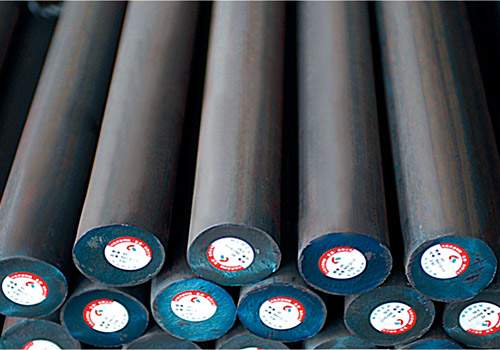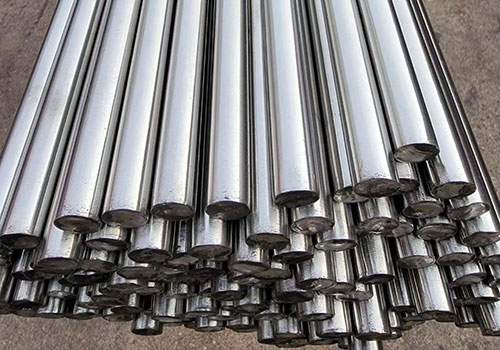
Understanding ASTM 1020 Steel for Your Projects
Table of Contents
Introduction

When selecting materials for construction, manufacturing, or engineering projects, choosing the right type of steel is crucial to the project’s success. One of the most commonly used carbon steels in various industries is ASTM 1020 steel. Known for its strength, weldability, machinability, and versatility, this steel grade is a popular choice for manufacturers and engineers worldwide.
In this blog post, we will dive deep into ASTM 1020 steel, covering its properties, uses, benefits, and factors to consider when selecting it for your projects. Whether you are working on automotive parts, machinery, or structural components, understanding ASTM 1020 steel will allow you to make an informed decision for your project needs.
What is ASTM 1020 Steel?
ASTM 1020 steel is a low-carbon steel that falls under the category of carbon steels. The “1020” in its name refers to its carbon content, which typically ranges between 0.18% and 0.23%. This low-carbon content makes the steel more ductile and easier to form and machine compared to higher-carbon steels. ASTM 1020 is commonly used in situations where parts require a balance of strength, machinability, and formability.
The designation “ASTM” refers to the American Society for Testing and Materials, an organization that sets the standards for materials, products, systems, and services. ASTM A1020 specifies the properties and performance of low-carbon steel, making it an ideal material for a wide variety of applications.
Key Properties of ASTM 1020 Steel
Understanding the properties of ASTM 1020 steel is essential in determining whether it is suitable for your specific project needs. Let’s break down some of the most important characteristics:
- Chemical Composition: ASTM 1020 steel is primarily made up of carbon (0.18-0.23%) with small amounts of manganese, sulfur, and phosphorus. The low carbon content contributes to its excellent machinability and weldability.
- Strength and Hardness: ASTM 1020 steel has a tensile strength that typically ranges from 440 to 700 MPa, making it strong enough for many applications, yet still malleable enough to process. Its hardness is lower compared to high-carbon steels, which makes it easier to machine and form into desired shapes.
- Weldability: One of the standout features of ASTM 1020 steel is its excellent weldability. The low carbon content reduces the risk of cracking, making it easier to weld without the need for special techniques or additives. This makes it a go-to material for industries where welding is a key part of the manufacturing process.
- Formability: With good formability, ASTM 1020 steel can be easily shaped into various forms through processes such as stamping, bending, or deep drawing. This property makes it a great choice for parts that require intricate shapes.
- Machinability: The low carbon content and consistency of ASTM 1020 steel make it highly machinable. It can be easily cut, drilled, and turned, allowing for greater precision in manufacturing. Its machinability also translates to shorter production times and reduced costs.
Common Applications of ASTM 1020 Steel
Due to its favorable properties, ASTM 1020 steel is used in a wide range of industries. Here are some of the most common applications of this material:
1. Automotive Industry
In the automotive sector, ASTM 1020 steel is used to produce a variety of components, such as gears, shafts, and engine parts. Its excellent machinability allows for the precise manufacturing of small parts that are integral to the vehicle’s operation. The steel’s weldability also ensures that automotive manufacturers can easily join parts without compromising strength.
2. Construction Industry
ASTM 1020 steel is also used in the construction industry for producing structural beams, columns, and reinforcing bars. Its strength and weldability make it an ideal choice for load-bearing elements in buildings and bridges. Additionally, it can be used for manufacturing frames, supports, and other structural components that require reliability and durability.
3. Oil and Gas Industry
The oil and gas industry often uses ASTM 1020 steel for the production of pipes, valves, and other machinery components that are exposed to harsh environments. Its corrosion resistance and ability to withstand high pressures make it an ideal material for use in pipelines, drilling equipment, and other infrastructure components in the oil and gas sector.
4. Aerospace Industry
While ASTM 1020 steel is not typically used for critical load-bearing components in the aerospace industry, it is still used for making non-critical parts such as brackets, fasteners, and housings. Its balance of strength and machinability makes it suitable for aerospace applications that do not require the extreme strength of higher-carbon steels.
5. Manufacturing of General Machinery
In general manufacturing, ASTM 1020 steel is used for producing various types of machinery components, including parts for industrial equipment, tools, and appliances. Its ability to be easily shaped and machined makes it an ideal material for mass production of parts that need to be both cost-effective and durable.
Factors to Consider When Choosing ASTM 1020 Steel
When selecting ASTM 1020 steel for your project, several factors should be taken into consideration to ensure that it meets your requirements:
- Strength Requirements: While ASTM 1020 steel has good tensile strength, it may not be suitable for applications that require extremely high strength. If your project involves high-stress applications, you may need to consider a higher-carbon steel or alloy steel.
- Corrosion Resistance: ASTM 1020 steel offers limited resistance to corrosion. If your project involves exposure to moisture or harsh chemicals, you may need to apply coatings or opt for stainless steel, which offers superior corrosion resistance.
- Welding Needs: If welding is an essential part of your project, ASTM 1020 steel is an excellent choice due to its superior weldability. However, if welding is not required, alternative materials might be more appropriate.
- Machining Requirements: If your project requires high-precision machining or parts with complex geometries, ASTM 1020 steel’s excellent machinability makes it a perfect material. If machining is not required, other materials with higher strength might be more appropriate.
Comparison Table for ASTM 1020 Steel and Similar Materials


Here’s a comparison table that highlights the differences in chemical composition, strength, and machinability between ASTM 1020 steel and other commonly used steels.
| Material | Carbon Content | Tensile Strength | Yield Strength | Hardness (Brinell) | Machinability |
|---|---|---|---|---|---|
| ASTM 1020 Steel | 0.18-0.23% | 440-700 MPa | 255-450 MPa | 140-170 | Excellent |
| ASTM 1045 Steel | 0.43-0.50% | 565-755 MPa | 325-540 MPa | 170-210 | Good |
| ASTM A36 Steel | 0.26% | 400-550 MPa | 250-400 MPa | 130-170 | Good |
| ASTM 4140 Steel | 0.38-0.43% | 655-850 MPa | 415-655 MPa | 180-220 | Fair |
The table above compares ASTM 1020 steel to other steel grades like ASTM 1045 and A36. ASTM 1020 stands out for its balance of machinability and strength, while ASTM 1045 offers higher tensile strength but reduced machinability.
Conclusion
ASTM 1020 steel is a low-carbon steel that offers a great balance between strength, machinability, and weldability, making it an excellent choice for many manufacturing and construction applications. Its ability to be easily shaped, welded, and machined allows for efficient production of a variety of parts used in industries such as automotive, construction, oil and gas, and manufacturing.
When choosing ASTM 1020 steel for your project, it’s essential to consider factors such as strength, corrosion resistance, and machinability to ensure the steel is the right fit for your application. With its versatility and cost-effectiveness, ASTM 1020 steel continues to be one of the most widely used materials for a wide range of industrial applications.
FAQ
What is ASTM 1020 steel used for?
ASTM 1020 steel is used in a variety of industries, including automotive, construction, oil and gas, and manufacturing. It is commonly used for making gears, shafts, structural components, and machinery parts.
Can ASTM 1020 steel be welded?
Yes, ASTM 1020 steel is highly weldable, making it suitable for projects that require welding. Its low carbon content reduces the risk of cracking during the welding process.
How does ASTM 1020 steel compare to other steels?
ASTM 1020 steel offers a good balance of strength and machinability. It has lower strength compared to higher-carbon steels like ASTM 1045 but is easier to machine, making it a good choice for many general-purpose applications.
Is ASTM 1020 steel corrosion-resistant?
ASTM 1020 steel has limited corrosion resistance. For projects exposed to harsh environments, you may need to apply protective coatings or choose materials with better corrosion resistance, such as stainless steel.
How is ASTM 1020 steel different from stainless steel?
ASTM 1020 steel is a carbon steel, whereas stainless steel contains chromium, which offers better corrosion resistance. Stainless steel is ideal for applications that require high resistance to corrosion, whereas ASTM 1020 steel is better for general-use applications.






